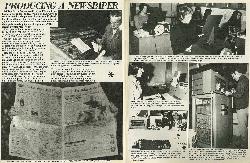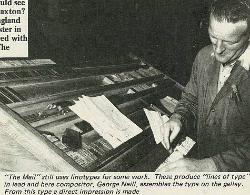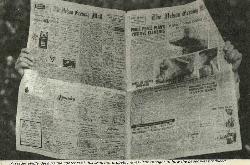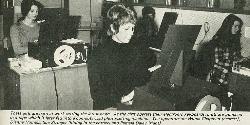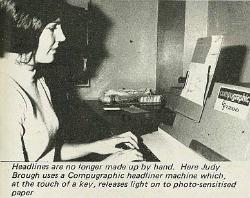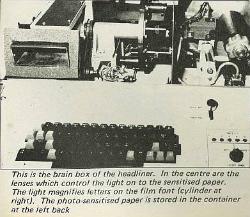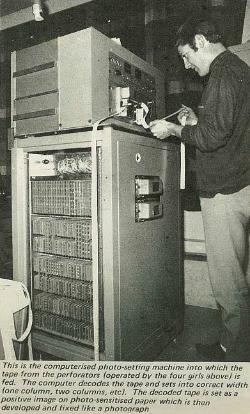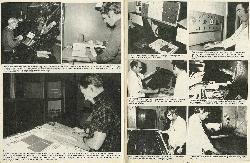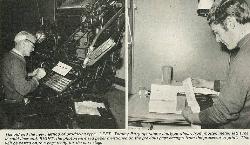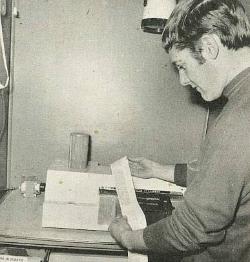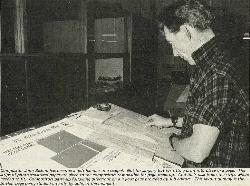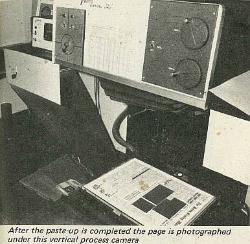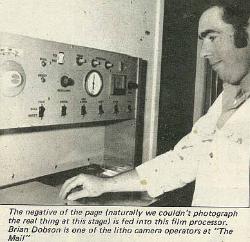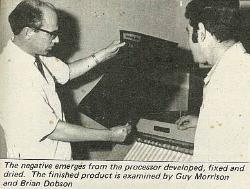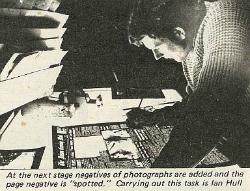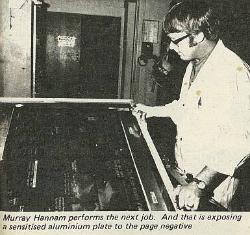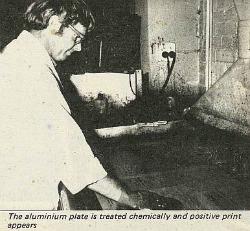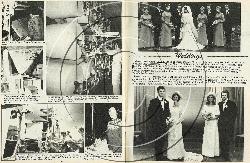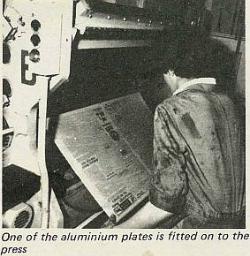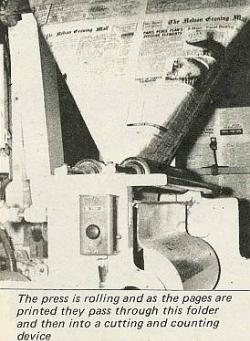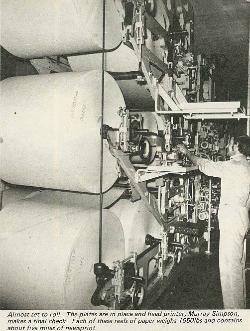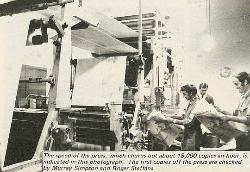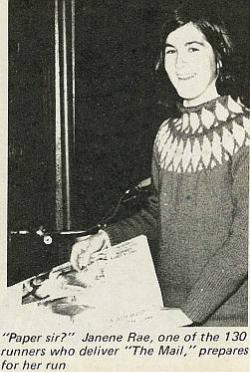56
Producing a Newspaper
William Caxton's eyes would boggle if he could see how printing is done today. Who is William Caxton? He is regarded as the pioneer of printing in England but the small print shop he set up in Westminster in 1476 would look an amateurish affair compared with the sophisticated equipment that produces "The Nelson Evening Mail" today.
Most people don't realise what goes into producing a newspaper so "Photo News, " with the co-operation of the management of "The Mail, " went behind the scenes.
We have not the space to include all aspects of newspaper work but most readers will have, at some time, come into contact with the reporters, photographers and advertising staff. So we have concentrated on the "backroom boys."
Handling of copy at "The Mail" has been revolutionised with about $50, 000 worth of computerised photo-setting machines and the accent is on the use of photographic processes. The paper introduced the web offset system in 1964 but many New Zealand papers are still produced by the long-established letterpress method. Offset is where the pages are photographed after being made up and then from the negative of the page an image is made on an aluminium plate. From this plate, placed on the press, the page is printed.
The letterpress method is, as the name suggests, pressing the letters onto the newsprint direct from the lead symbols. Sounds simpler? Well offset, particularly using electronic and computerised equipment, is a deal faster and gives better reproduction.
"The Mail" still uses linotypes for some work. These produce "lines of type" in lead and here compositor, George Neill, assembles the type on the galley. From this type a direct impression is made
A reader avidly devours the contents of this issue but probably gives little thought to how the paper was produced
57
These girls are hard at work setting the latest news. As the girls operate their electronic keyboards, units are punched in a tape which is later fed into a computerised photo-setting machine. The operators are Wilma Chapman (nearest), Dianne Holmes, Sue Stringer (hiding in the corner) and Pamela Daley (right)
Headlines are no longer made up by hand. Here Judy Brough uses a Compugraphic headliner machine which, at the touch of a key, releases light on to photo-sensitised paper
This is the brain box of the headliner. In the centre are the lenses which control the light on to the sensitised paper. The light magnifies letters on the film font (cylinder at right). The photo-sensitised paper is stored in the container at the left back
This is the computerised photo-setting machine into which the tape from the perforators (operated by the four girls above) is fed. The computer decodes the tape and sets into correct width (one column, two columns, etc). The decoded tape is set as a positive image on photo-sensitised paper which is then developed and fixed like a photograph
58
The old and the new method of producing type.
Tommy Parry operates a linotype which, from molten metal, sets type in solid lines and,
The photo-sensitised paper mentioned on the previous page emerges from the processor as print This will be pasted on, to a page ready for the next stage
Compositor John Bishop has become a deft handler of a scalpel. Not for surgery but for fitting print into place in a page. The strips of photo-sensitised paper are given to the compositors responsible for page make up. And their task is cut the strips where needed to fit. Compositors paste-up following directions on a layout page provided by sub editors. This layout dummy is the smaller page being studied intently by John at the moment
59
After the paste-up is completed the page is photographed under this vertical process camera
The negative of the page (naturally we couldn't photograph the real thing at this stage) is fed into this film processor. Brian Dobson is one of the litho camera operators at "The Mail"
The negative emerges from the processor developed, fixed and dried. The finished product is examined by Guy Morrison and Brian Dobson
At the next stage negatives of photographs are added and the page negative is "spotted." Carrying out this task is Ian Hull
Murray Hannam performs the next job. And that is exposing a sensitised aluminium plate to the page negative
The aluminium plate is treated chemically and positive print appears
60
One of the aluminium plates is fitted on to the press
The press is roiling and as the pages are printed they pass through this folder and then into a cutting and counting device
Almost set to roll. The plates are in place and head printer, Murray Simpson, makes a final check. Each of these reels of paper weighs 1050lbs and contains about five miles of newsprint
.The speed of the press, which churns out about 18, 000 copies an hour, is indicated in this photograph. The first copies off the press are checked by Murray Simpson and Roger Steffans
"Paper sir?" Janene Rae, one of the 130 runners who deliver "The Mail, "prepares for her run


